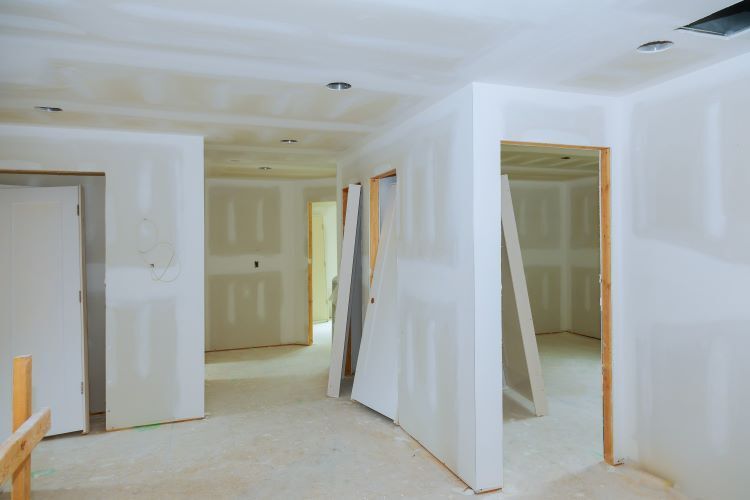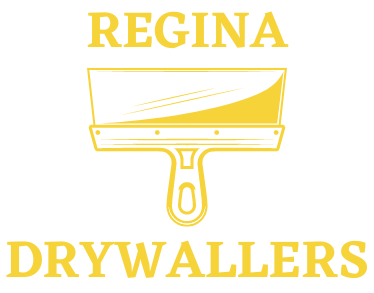The Process of Drywall Finishing

Drywall finishing is one of the most critical stages of a drywall installation project. While installing drywall is an important step, it’s the finishing process that really brings the walls and ceilings to life, creating a smooth, seamless surface ready for paint or other finishes. Whether you’re renovating a home, finishing a basement, or working on a commercial property, understanding the drywall finishing process is key to achieving the best results.
At Regina Drywallers, we have years of experience providing top-quality drywall finishing services to homeowners and businesses across Regina. In this blog post, we’ll walk you through the drywall finishing process step-by-step so you know exactly what to expect and how to prepare for each phase of the job.
Step 1: Taping the Seams
Once drywall sheets have been securely mounted on the walls or ceiling, the first step in the finishing process is taping the seams. This involves covering the joints where the drywall sheets meet with a special drywall tape and compound.
- Materials used: Paper tape or mesh tape
- Procedure: The drywall compound (also known as joint compound or mud) is applied to the seams with a drywall knife, and then the tape is embedded into the wet compound. This helps reinforce the joints and prevent cracking.
- Why it matters: Taping ensures that the seams are properly sealed and creates a smooth base for the subsequent layers of finishing.
Step 2: Applying the First Coat of Joint Compound
After the seams are taped, the next step is to apply the first coat of joint compound. This is the first layer of mud that covers the tape and fills in the gaps between the drywall sheets.
- Procedure: A wide drywall knife or trowel is used to spread the compound evenly over the taped seams and along any screw or nail heads. The goal is to create a smooth, consistent layer over the tape, blending it into the surrounding drywall surface.
- Why it matters: This first layer helps create a solid foundation and smooth out the rough seams created by the drywall installation process. It also fills in any imperfections like nail pops or small gaps between sheets.
Step 3: Sanding and Smoothening
Once the first coat of joint compound has dried (which usually takes about 24 hours), it’s time to sand the surface. This step is crucial for ensuring that the drywall has an even, smooth finish, free of lumps or ridges.
- Procedure: A drywall sander or a hand sanding block is used to smooth out the dried compound. Sanding is typically done in a circular motion to remove excess mud and create a smooth, flat surface.
- Why it matters: Proper sanding is essential to achieving a flawless surface, as it ensures there are no bumps or imperfections that could affect the final finish.
Step 4: Applying the Second Coat of Joint Compound
Once the surface is smooth, a second coat of joint compound is applied to further smooth out the seams, cover any imperfections, and enhance the overall appearance of the drywall.
- Procedure: Similar to the first coat, the second layer of compound is spread over the seams, filling in any remaining gaps or uneven areas. This coat is typically thinner and more refined than the first coat, as it’s meant to create a perfectly smooth finish.
- Why it matters: The second coat helps create a seamless look, ensuring that the drywall joints are barely visible and that the compound fills in all of the gaps.
Step 5: Final Sanding and Touch-Ups
After the second coat of compound has dried, it’s time for another round of sanding to achieve a perfectly smooth surface. This is followed by any necessary touch-ups.
- Procedure: The surface is lightly sanded to remove any minor imperfections. If needed, a third thin coat of joint compound is applied and sanded again for an ultra-smooth finish. At this stage, the drywall should look flawless with no visible seams or imperfections.
- Why it matters: This final sanding and touch-up step is critical for ensuring that the drywall is ready for priming and painting. A smooth, flawless finish is essential to achieving a professional look when the walls are painted.
Step 6: Priming and Painting
Once the drywall finishing is complete, the next step is priming and painting the surface. Priming prepares the drywall for paint by sealing the surface and helping the paint adhere better, while also hiding any remaining seams or imperfections.
- Procedure: A drywall primer is applied first, followed by a paint finish of your choice. The type of paint used can vary depending on the room’s purpose (e.g., bathroom, kitchen, or living room) and the desired aesthetic.
- Why it matters: Priming and painting complete the drywall finishing process, providing both functional protection and an aesthetically pleasing look for your space.
Why Choose Regina Drywallers for Your Drywall Finishing?
At Regina Drywallers, we pride ourselves on delivering high-quality drywall finishing that ensures a professional, flawless result. Our team has years of experience in the industry, and we take the time to carefully complete every step of the drywall finishing process. Whether you’re renovating a basement or finishing a new construction, we offer the expertise you need to transform your space.
Our commitment to quality, attention to detail, and use of top-notch materials ensures that your drywall finishing will be smooth, seamless, and built to last.
Conclusion
Drywall finishing is a detailed and skilled process that requires careful attention to detail at every stage. From taping and mudding the seams to the final coat of paint, each step is essential to achieving the smooth, flawless finish that every homeowner desires. With the right tools, technique, and experience, drywall finishing can transform a bare, unfinished space into a polished, inviting area.
If you're planning a drywall project in Regina, trust the experts at Regina Drywallers to deliver top-quality results. Contact us today to learn more about our drywall finishing services or to get started on your next home renovation!
You Might Also Enjoy:



Contact Us!
